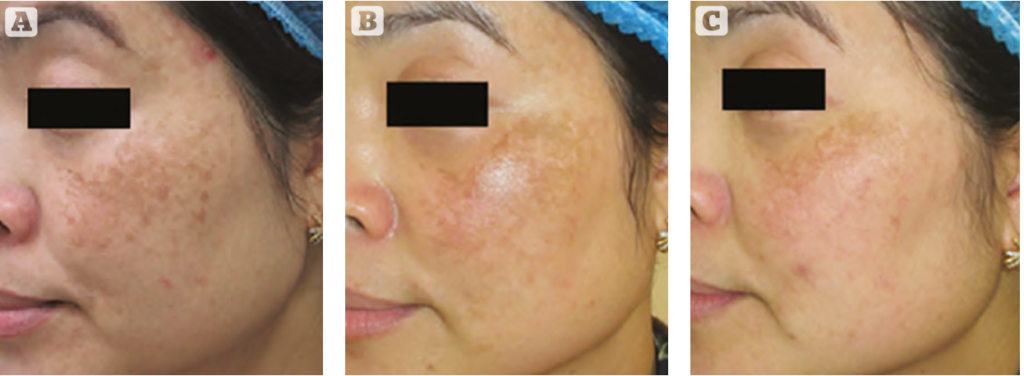ilooda unveil Secret RF to treat melasma with little downtime or risk of side-effects

Clinic, 44 Trung Phụng Str., Đống Đa Dist., Hanoi, Vietnam
Secret RF offers a safe and effective solution to treat refractory melasma even for dark skin types with just a few sessions and no risk of side-effects.
Secret RF was used in this study to treat refractory melasma by combining fractional microneedle radiofrequency (FMR) with multiple types of lasers. This approach proved to provide a significant improvement to refractory melasma without any risk of side-effect.
Pham Huu Nghi Assoc Prof. PhD. MD a lead dermatologist in Vietnam combined FMR with multiple types of lasers (Picosecond laser 450nm, Fractional 1927nm laser, Dye laser 585nm, Long pulsed laser) in the treatment of refractory melasma, which is a novel treatment method. The treatment results showed visible improvement in clinical images of melasma with an average of 5.76 points of MASI (Melasma Area and Severity Index) reduction, 66% improvement compared to traditional laser treatment after an average of 3.9 treatment sessions and no significant side-effect.
In this study, FMR was used in combination with multiple types of lasers to treat refractory melasma for 11 patients who were encountering treatment difficulties with methods of multiple types of lasers. FMR was added to the treatment plan. Despite attending just a few treatment sessions and being monitored for a short amount of time, the patients recorded a better response clinically and showed significant improvement; no side-effects were observed.

The combination of FMR with multiple types of lasers in melasma treatment is the result of two approaches — lasers were used to target the skin surface downward, while the FMR targeted selective depth levels, thus limiting the damaging effect to the skin surface (e.g. basement membrane disruption, hypopigmentation during treatment with skin type IV–V, etc.) from lasers when used alone.
The FMR device (Secret RF, Ilooda, Republic of Korea) was used with a semi-insulated 25 pin needle with treatment parameters of 0.5- to 1.0 mm microneedle penetrating depth, 40–46% of intensity and
50–70 ms duration with 1 pass. The treatment was conducted after the laser treatment. The interval between treatments was 1 month.
The treatment is based on FMR creating small injuries and stimulating the generation of growth factors and collagen production in the dermis. Platelets and neutrophils are recruited to release growth factors such as transforming growth factor (TGF)-alpha, TGF-beta and platelet derived growth factor, thereby inducing a natural wound healing cascade.
This approach in treating refractory melasma showed visible improvement in the clinical images of melasma
(MASI lowered by 5.76 points on average) after an average of 3.9 treatment sessions.




